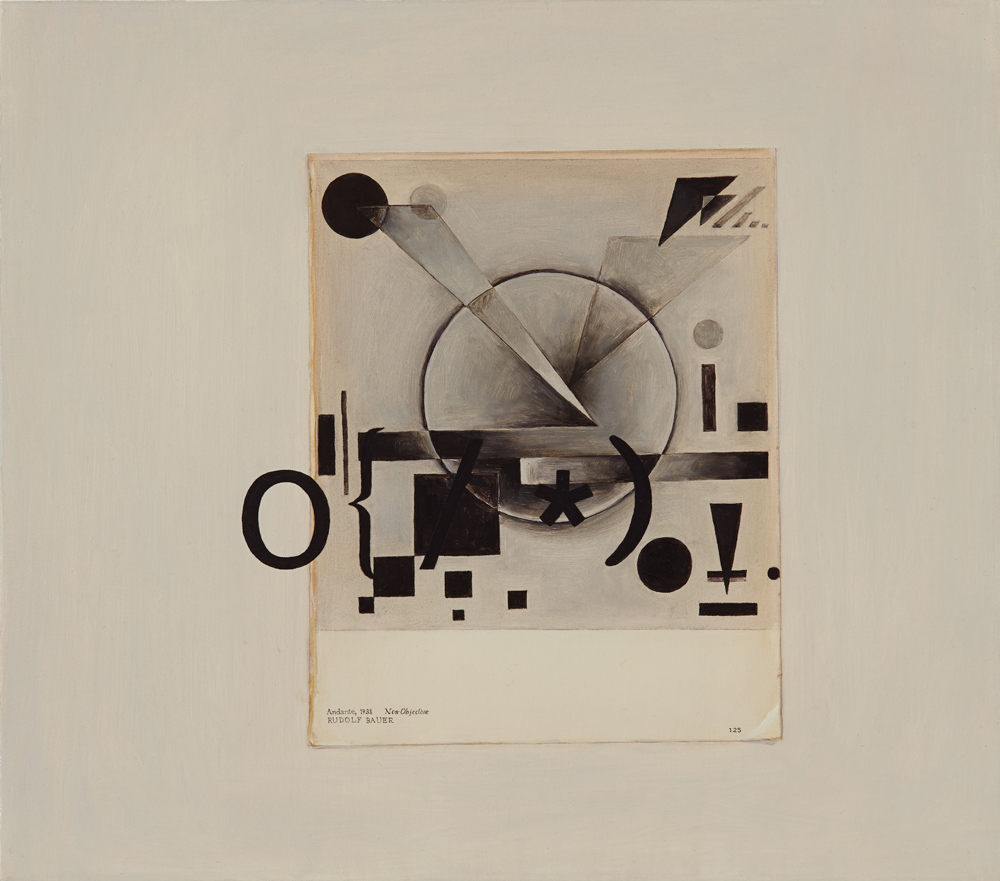My process of creating paintings is a dialogue with form and ideas. Though the finished images are representational, the paintings remain ‘open’, literally blank, through a great deal of the process. The previous series of paintings – “The Words” and this subsequent series, represent images of books: sometimes the book cover or the book opened to show a page inside, or as in the newest works, the page is literally torn out of the book. Each image begins as a near abstraction, the book or the page is reduced to its rectangular form placed so as to be somewhat antagonistic to its support (not unlike Malevich’s White on White) with images and text only appearing later in the process. The supports themselves (the stretched canvases) are often subtly rough around the edges, or just slightly askew, allowing for the objectness of the canvas to both support and undermine the illusion of the objectness of the book.
To me the paintings seem more pure in this quasi-abstract state, even if they are already slightly verging on the heretical to notions of true abstraction. Even so, I feel compelled to further compromise or subvert this formal purity with subsequent layers of content. The book paintings caused me to think about language formally, causing me to reflect more on the formal qualities of the painting language.
Following this path has lead me to my most recent body of work: these newest paintings portray reproductions of abstract paintings, usually from the 1940’s, most of which have been printed in black and white. These pages I have literally torn from books with such heroic titles as Pioneers of American Abstraction or New Frontiers in American Painting. The black and white reproductions which once frustrated me in their lack of correlation to the original artworks, now seem somewhat in the nature of “authorless texts”, or perhaps even unwitting collaborations between painter and printer having produced something other and beyond a true document of the original. In my paintings, these formalist black and white reproductions are represented still circumscribed within the rectangle of the page, which, with its dog-eared corners or other signs of age serves both to enclose the image and to push it back in time. In this way the images seem to remain in a citational form, as quotations of an original. The empty space around the page serves as a quotation mark to the left and to the right, as if to say: ‘as if it wasn’t me’. Though initially, through the process of painting, I do inhabit these works, when this layer is complete I subvert the images by the overlapping of my own interventions: geometric shapes and the formal compositional elements of written language: punctuation, parentheses, asterisks and so on.
Agnes Martin once said that her work was ‘about perfection as we are aware of it in our minds but that the paintings are very far from being perfect – completely removed in fact’ even as we ourselves are. Through the use of overlapping layers of content and form I desire to tie the paintings down, burden them so as to bring them down to life’s level; to bring them into the clutter of dailyness, commenting upon and relating abstraction to abstraction.
